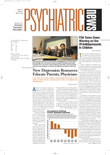In a season of dire austerity, and with little or no help from Washington, states are scraping together a variety of means for addressing health care access and quality within their borders.
Most prominent among these efforts are “premium-assistance” programs in which a state uses public funds to pay for a portion of the premium costs of employer-sponsored insurance for eligible populations, said Alan Weil, executive director and president of the National Academy of State Health Policy (NASHP), at last month's Health Action conference in Washington, D.C., sponsored by Families USA.
Somewhat less common, given the thin margin with which states are working, are expansions of Medicaid and the State Children's Health Insurance Program. But some states are finding cost-cutting measures allowing them to grow those programs.
A few states are busy building a consensus for more sweeping, comprehensive health care measures aimed at ensuring everyone in the state is covered. These measures are not likely to be enacted soon, but are being pursued with an eye toward a more fiscally robust future, Weil said.
Finally, apart from the issue of access, a number of states are working on improving health care quality and efficiency, he said.
Striving to find the lighter tones in what was rendered throughout the conference as a grim picture for public health and social service programs in general, Weil said states bring a pragmatic, let's-make-something-work approach to health care that is generally lacking in Washington.
He said that politicians of every stripe and in every state view health care as an unavoidable issue. Every sort of option—from limited benefit packages, mandate-free benefits, and health savings accounts—is under consideration.
“No one can go out to the voters and say health care is someone else's problem or that the government doesn't have a role in helping people figure out how to get health care coverage. The fact that it's on the agenda of both parties and in every state, as we gain some experience and learn what works and what doesn't work, creates some room for moving forward.”
Bridging Gap Between Public, Private
Weil said premium-assistance programs, which are the predominant approach states are taking today, are basically about building a bridge between public and private health insurance systems. They have grown up around the recognition that the majority of the uninsured are workers employed by businesses that do not offer health insurance.
So, for instance, a state may publicly subsidize the purchase of employer-provided health insurance for workers who qualify. Some contribution is also expected from either the employer or the employee, or both, Weil said.
According to the NASHP, 14 states now operate some form of premium assistance: California, Illinois, Georgia, Iowa, Massachusetts, Missouri, New Jersey, Oregon, Pennsylvania, Rhode Island, Texas, Utah, Virginia, and Wisconsin. At least 10 other states are in the process of developing a premium-assistance program.
“The bad news is that because they are trying to cobble together different dollars from different sources, it's hard to come up with the financing to achieve a solid, comprehensive insurance policy,” Weil said.
He added, however, that there is an emerging consensus among elected officials in both parties and across the country that the gap between public insurance and private insurance—where most of the uninsured fall—is ripe for action.
Growing Programs in Austere Times
What Weil called “garden variety” expansions of Medicaid and the State Children's Health Insurance Program are rare in today's austere environment, but a few states are looking at creative ways to expand their programs.
“Illinois stands out as having made a significant effort with some success and is trying to go further,” he said. “Colorado approved taxes to fund health care programs, and the legislature is looking seriously at some expansions. And through a variety of waiver methods, states are looking at their Children's Health Insurance Program funds, those that have them available, to expand the program.
“Even though so many states are looking at ways to minimize cuts, there are even in bad years a few that are looking at Medicaid the way they have in the past as a tremendous opportunity to expand coverage,” Weil said.
He said that in a number of states—notably Missouri, New York, and Massachusetts—there are grass-roots or foundation-led efforts to build a consensus for universal coverage within the state.
“Now, they are not looking to implement [these proposals] next month,” Weil said, “but one of the nice things about states is that when they're seeing that times are tough, there are advocates who keep health care on the agenda and basically force conversations to occur so that you're building the foundation for activities that may not be possible until the budget situation gets better.” ▪
